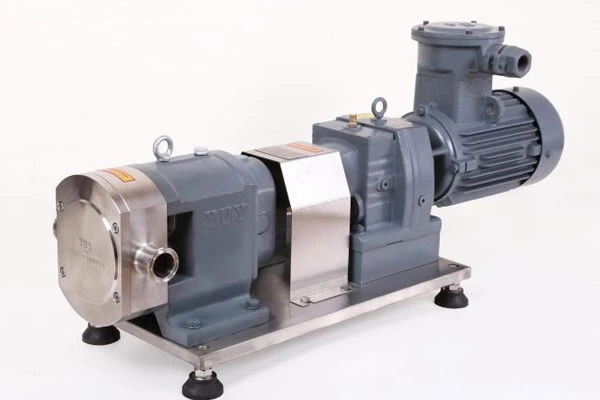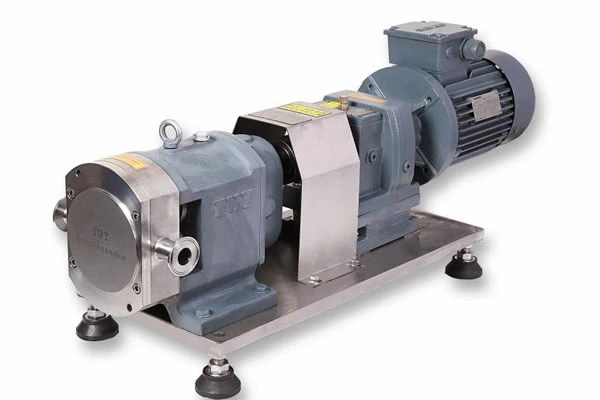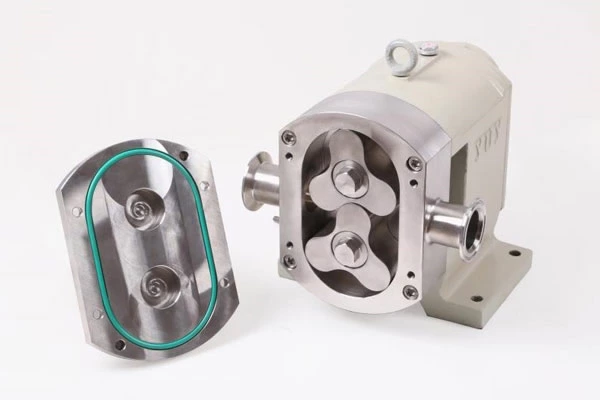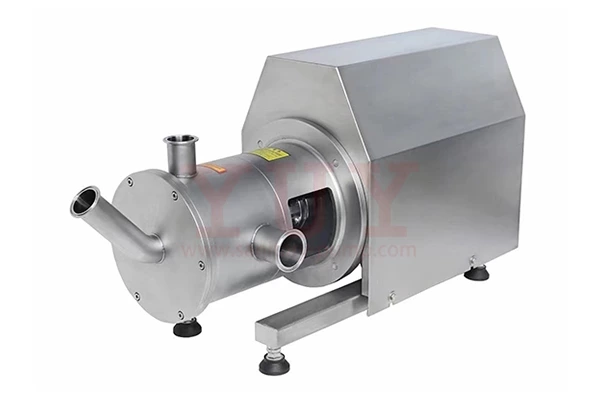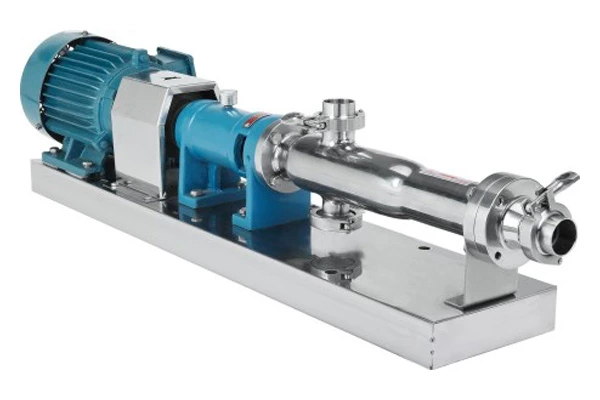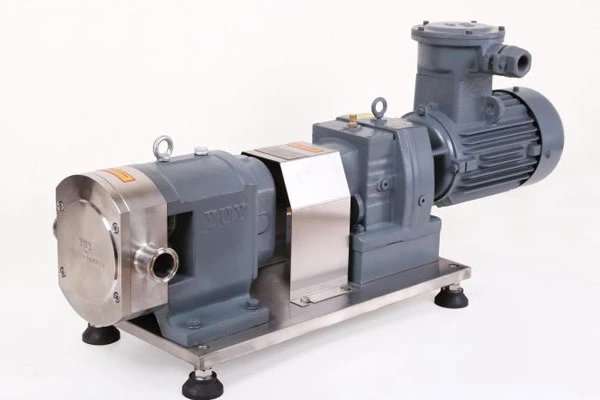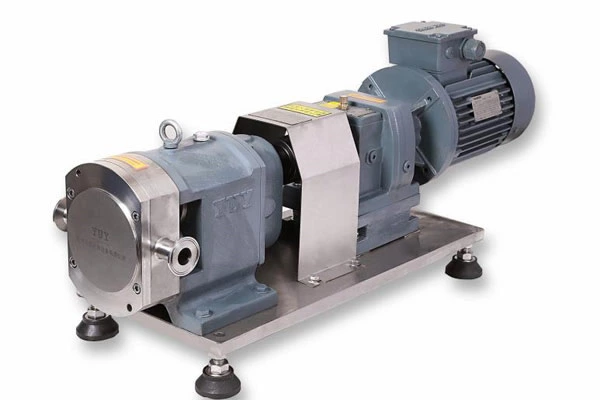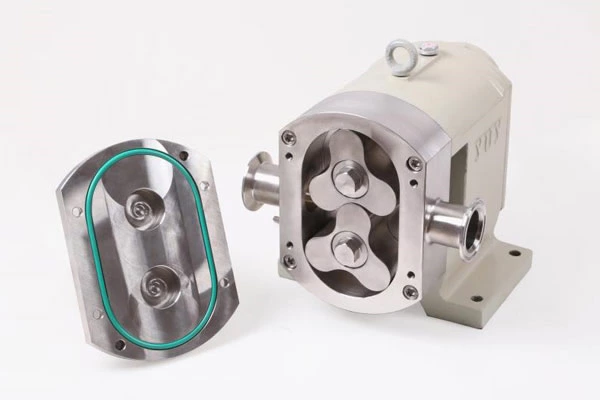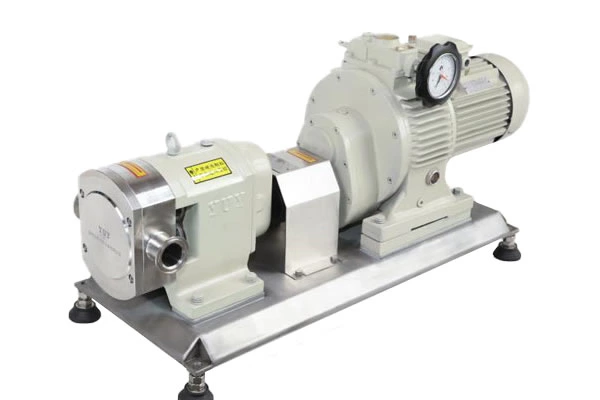Axial Force Of The Pump
In addition to the above factors that inevitably cause the pump rotor to generate axial force, other unreasonable factors will also cause axial force, mainly the following:
1. When Sanitary Rotary Lobe Pump is operating normally, the pressure at the impeller suction port is P1, the pressure on the back of the impeller is P2, and P2>P1. Therefore, a thrust F1 will be generated along the axial direction of the pump.
2. After the liquid flows through the impeller, the dynamic reaction force F2 is generated due to the change in flow direction. In a multi-stage centrifugal pump, the fluid usually flows into the impeller axially and flows out radially. The change in flow direction is due to the force of the impeller on the liquid, so the liquid also reacts to the impeller with an equal and opposite force. Axial force F caused by asymmetric pressure distribution on the blade
3. The pressure on the working surface of the blade is greater than the pressure on the back of the blade, and the pressure difference formed will also generate axial force.
4. Axial force F4 caused by asymmetric pressure distribution in the impeller flow channel.
5. For vertical pumps, the rotor inside has gravity, which will become a component of the axial force; while for horizontal pumps, this axial force does not exist.
6. The front and rear covers of the impeller are asymmetric;
7. There are unreasonable factors in the structural design of the shaft step, shaft end, etc.;
8. Other factors cause the rotor to generate axial force, such as radial flow in the pump cavity.
Among the many factors that generate axial force, the dynamic reaction force of the fluid in the pump cavity and the asymmetry of the front and rear covers of the impeller are the main reasons for the axial force generated by the rotor.
2. Water pump axial force balancing method
There are many ways to balance the axial force of the water pump rotor, such as setting a thrust bearing outside the pump, opening a balancing hole or balancing pipe on the water pump cavity to reduce the pump pressure, using back blades, double impellers, symmetrical distribution of impellers, etc. when designing the impeller, and using balancing discs and balancing drum structures. Among them, the balancing disc and balancing drum structure are mostly used to balance the rotor axial force.
The balancing disc is widely used in the axial force balance of multi-stage pumps. It is located after the last stage impeller of the pump. Its structural principle is shown in Figure 1. The balancing device has two gaps, radial and axial. The pressurized liquid flowing out of the last stage flows into the cavity in front of the balancing disc through the radial gap, forming a high pressure state. A balancing pipe is opened in the cavity on the rear side of the balancing disc and connected to the water pump inlet, so that the pressure in the cavity is basically the same as the pressure at the pump inlet. Since the pressures in the two cavities before and after the balancing disc are not equal, a pressure difference is formed, which generates a balancing force opposite to the axial force to achieve a balancing effect.
When the balancing disc structure is used to balance the axial force of the water pump rotor, the balancing force changes accordingly due to the continuous change of the axial force. Therefore, its working process is a dynamic balancing process. The balancing disc automatically adjusts the size of its variable gap by the movement of the rotor, thereby adjusting the size of the balancing force, which can fully balance the axial force of the rotor without relying on the assistance of an external thrust bearing. Therefore, the balancing structure can omit the external thrust bearing.
